Kathmandu Travel Guide is part of the ANA, Take Me ‘Round the World Trip Report.
TPOL’s Guns & Butter Travel Guide is the best way to see as much as you can in as little time as possible. Here’s how it works – A trip is composed of two factors: Labor And Lazy. The opportunity cost (what is given up) for relaxing and being Lazy is gained by being adventurous in the form of Labor and vice versa. The guide includes inefficient activities i.e., tourist traps that should be avoided and aspirational activities that are worth doing but may be impossible to see given the constraints of time and resources.
Welcome to Kathmandu. If you stepped out of the airport, were overwhelmed, and already want to leave, this Guns & Butter Travel Guide is for you. Be forewarned, this is more a bargaining guide than a sightseeing one.

Taxis
Kathmandu has topped the list for Worst Places to Hail a Cab. The drivers have an excuse for why the fare is never uniform. At the international terminal, I paid 300 rupees ($2.50) for a taxi to the Hyatt. When I tried to pay that much from the adjacent domestic terminal following my flight cancellation (see Nepal Domestic Flight Misery), I was told it was not possible because the hotel was too far.
From the Hyatt, it will be difficult to bargain for a good price. The hotel calls the taxi and you have no leverage if more than one taxi doesn’t agree to your price. The Hyatt is one of the nicest properties in Kathmandu, and it is assumed that if you stay there that you are wealthy. Little do they know it only costs 5,000 points a night!
If you want to get around the city, the taxis insist on 600 rupees and refuse to go down to 300. Because I was there when it was monsoon season and there were torrential downpours, I gave in to 500.
My guess is that locals pay 300 or less. With that in mind, don’t accept the go-to line recited all over SE Asia, “right now too much traffic.” Dismiss the “airport charges us for parking” lie. And don’t buy the, “It’s night time boss,” malarkey. That’s why there are headlights.

Toll Road Premium
I thought Puerto Rico had bad roads. Kathmandu has more potholes than smooth pavement. If there were a toll road premium, I would pay it. Unfortunately, that’s a myth that I made up.



Boudha Stupa
If you’re staying at the Hyatt, you can avoid the taxi for your first stop, the Stupa. I walked around and tried to find the mask that evaded me in Bhutan.



I could not believe that I negotiated the price from 5000 rupees ($66) to 1700 rupees ($22) when the lowest anyone would go in Bhutan was $282 for a plain one and a scam price of $772 for what I believe is a mass-produced mask with stones (see Finding Penis (Happiness): Bhutan Day 4).

TPOL’s TIP: Know which country to buy souvenirs. My Bhutanese guide said unless you are buying them from the factory, chances are they are made in Nepal.
Paintings
If masks were the tourist trap in Bhutan, then paintings are the con in Nepal. All over Kathmandu and Pokhora, there are elegant art dealers selling paintings found in Buddhist temples. Every dealer says that they are hand-painted and justify random prices based on the level of detail of the painting, the size, whether there is gold on the painting, or whether the painting was signed.
I was presented expensive ones and cheap(er) ones. I could not tell them apart. Indeed, I was told that only Tibetan experts or skilled artists would know which was real and which was fake. Like masks, I kept seeing the same ones over and over. I hypothesized that there was no way that these were not mass-produced. How can thousands of pieces be available, all of which were painted by hand? If these were real, there must be hundreds of savant painters in Nepal who must work round the clock.
After intense bargaining from $100, I bought one painting for 2500 rupees ($33).
Maya Momo
It was rainy. I was wet. And the taxis were trying to charge triple to go the next place on this list. Instead of being pressured by nature, I took a timeout from the hustle and stumbled upon Maya Momo. After a few beers and an order of buff momo, I was at ease again.


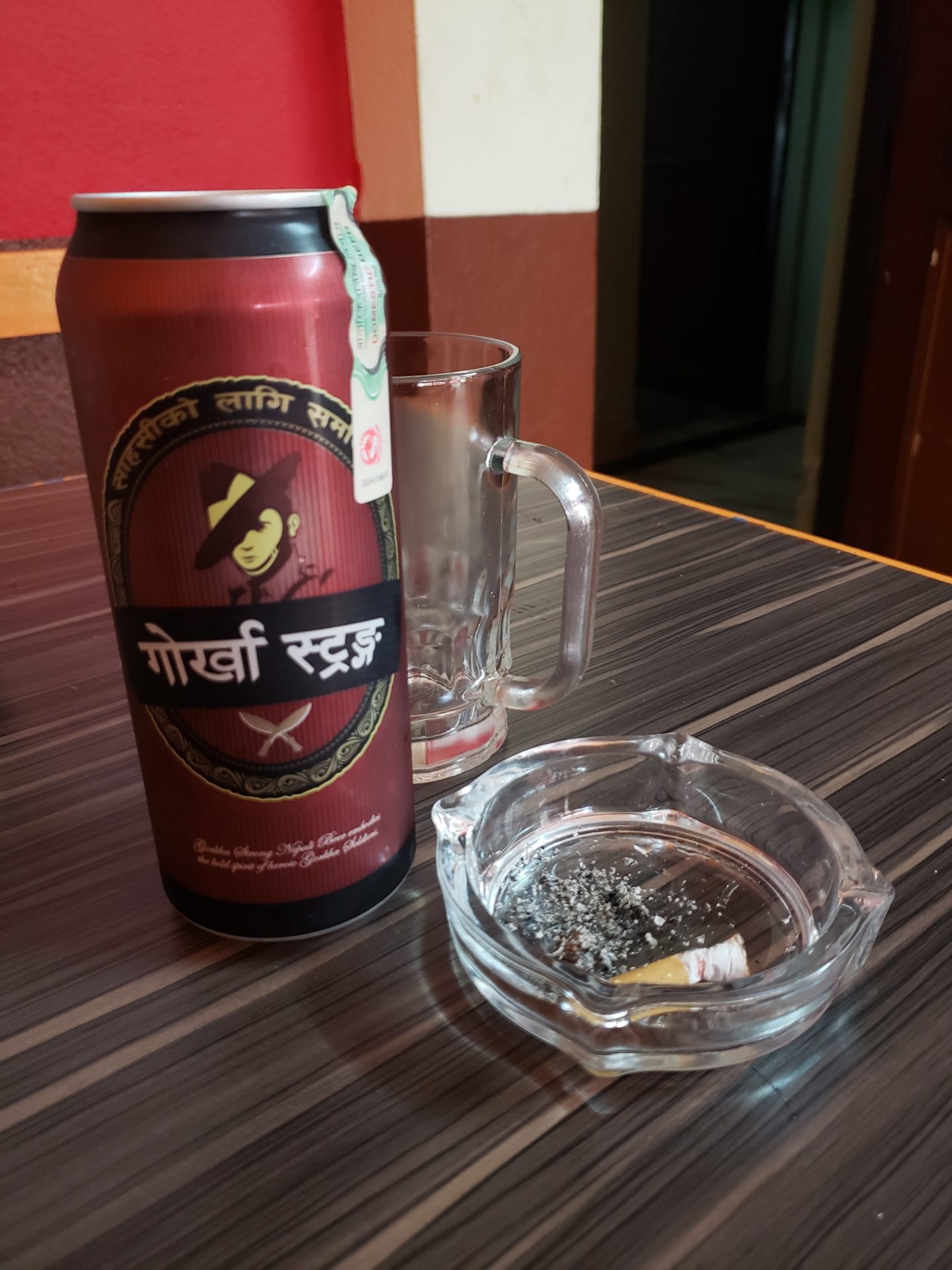
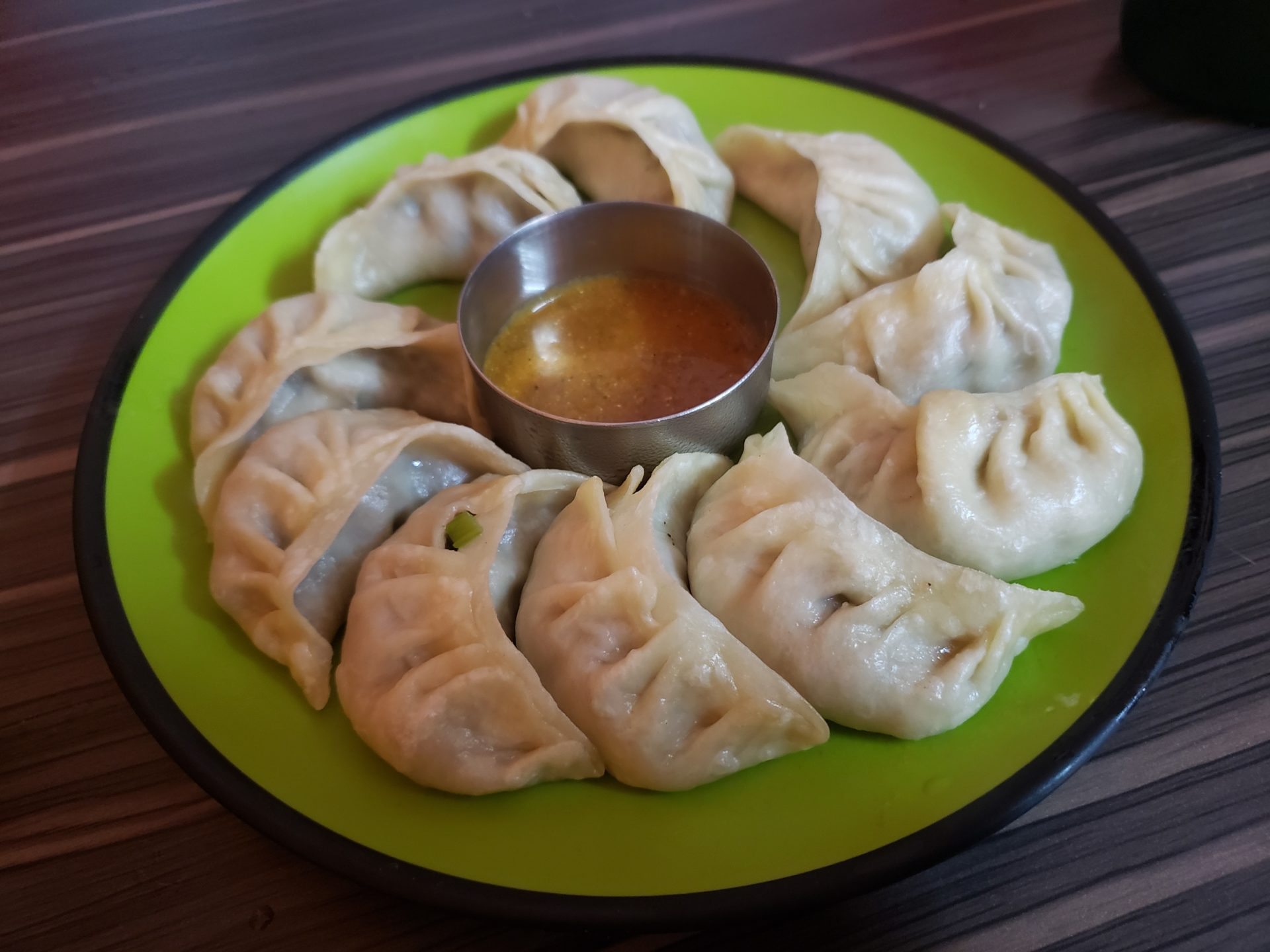

TPOL’S TIP: Buff Momo Soup is not Xiao Long Bao (see Xiao Long Bao: A Tutorial). It’s momo in broth. Think wonton soup.
I also ordered lo mein.

TPOL’S TIP: Chinese food and Indian food is great in Nepal.
Basantapur
Under the influence of momo, I was ready to take on the taxi drivers and go to Basantapur. The price, as stated above, was 500. Rain is a taxi’s best friend for inflating prices.
Basantapur is a UNESCO world heritage site. It is also an area hard hit by the 2015 earthquake. There are many captivating temples. Unlike Bhutan where I had a guide explaining what was what (see Guided Tours: Like Attending Class, It’s Boring But Sometimes Useful), in Nepal I only took pictures of the buildings and read signs when provided. I like to call this speed tourism.

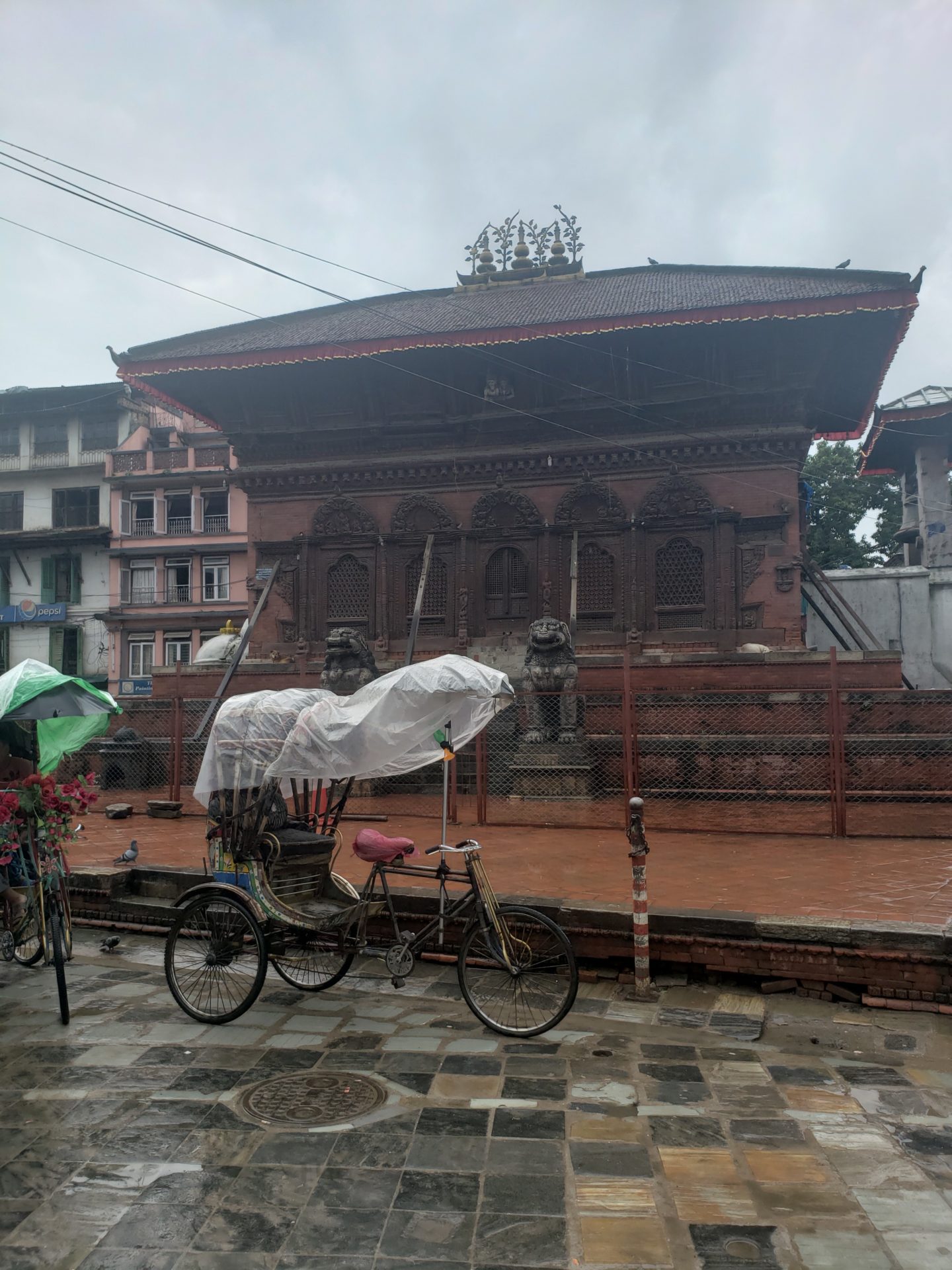






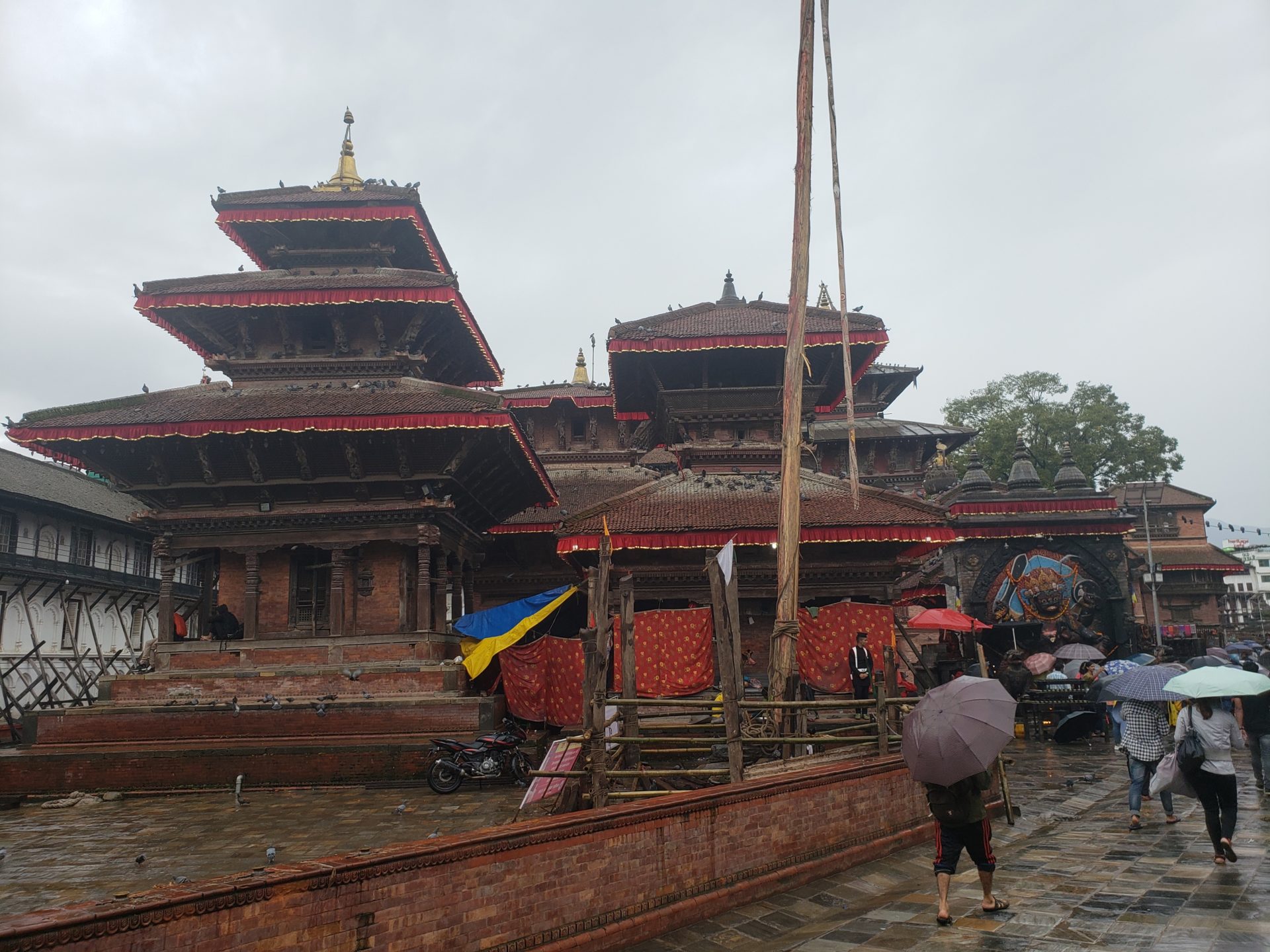




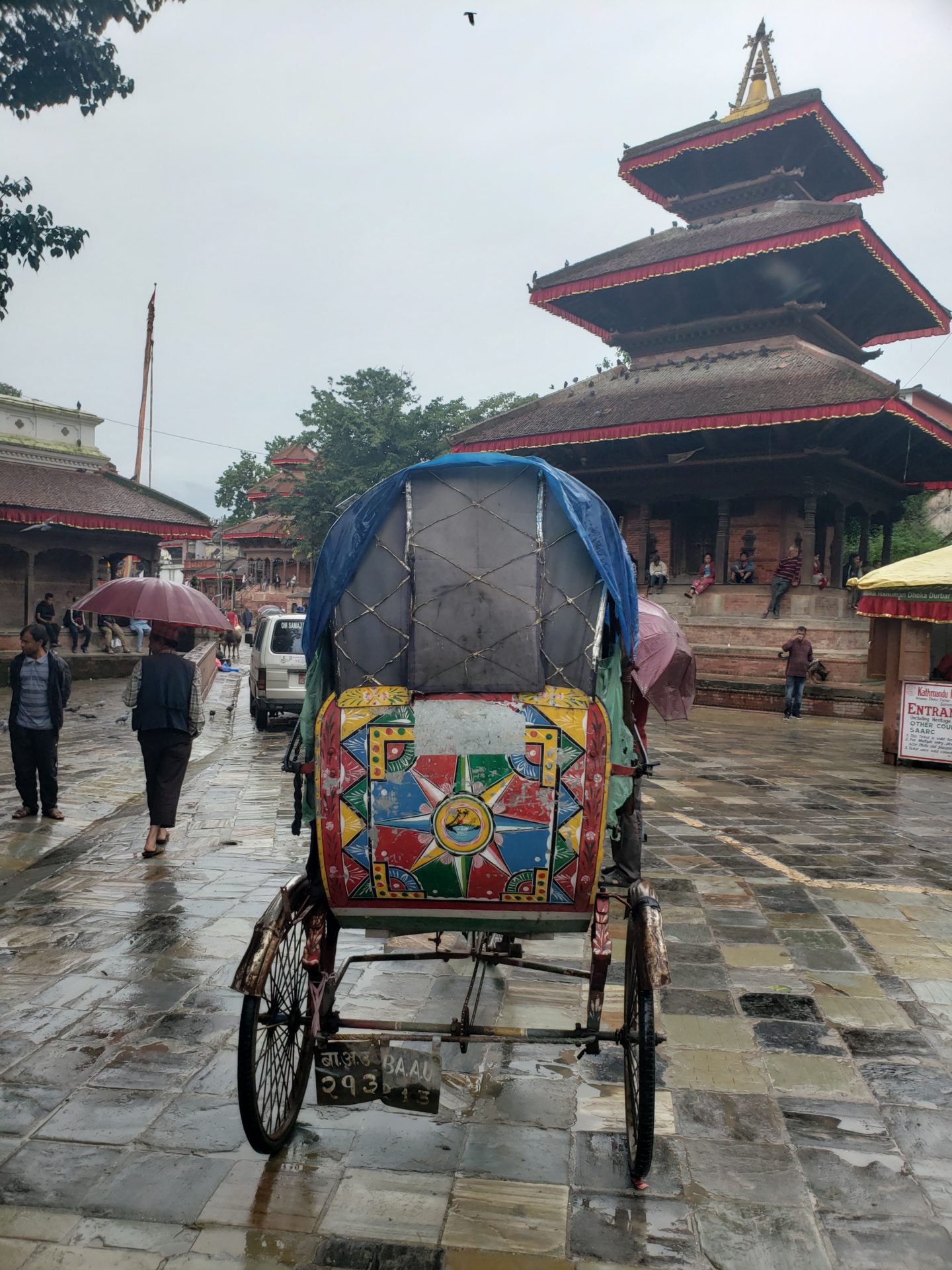





Patan Durbar Square
From Basantapur, I should have gone to Monkey Temple because it was close by. Had I done so, perhaps I could have taken the early flight to Pokhara and avoided the unanticipated cancellation
The speed tourism continued as I took more photos of temples. Had it not been wet and muddy, perhaps I would have stayed a few moments longer. Call it laziness, call it indifference, but I don’t have an interest in seeing temple after temple. I appreciated it in Bhutan because I was forced to go and had no choice but to listen to my guide to explain why they were significant.




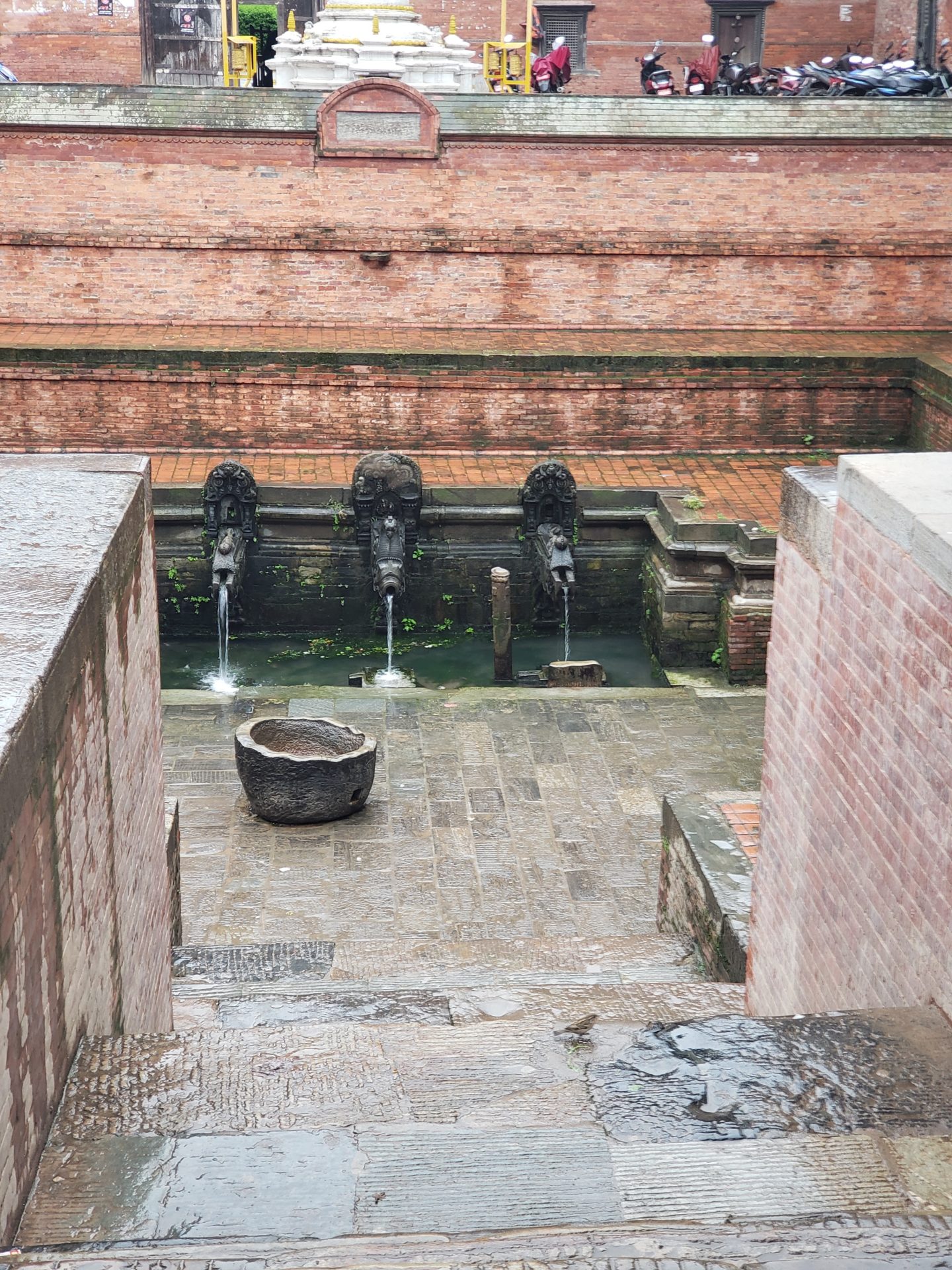


As stated in the post’s title, this is more of a guide about immersing myself via bargaining. I saw many stores selling pashminas. I had read online that many were fake, but like the paintings, I am not an expert in scarves.
TPOL’s TIP: Avoiding fakes is difficult. Unless you’re at a factory, assume it is not real and bargain like it’s a replica (see Fake Market Shanghai: 2019 Pricing Guide). That way you only pay a few dollars for something that you hope lasts and not a hundred dollars for something you hope is real (see Master Bargainer: TPOL’s TIPS for Shopping Abroad).
TPOL’S TIP: “I give you local price,” is the worst words you can hear. The merchant is admitting he rips everyone off. Why are you so special to get the local price?
And back to the bargaining. The scarves cost 400 ($3.33) rupees each. He wouldn’t budge off of that. For that price, I am sure they aren’t top quality material, but they look nice. I am also willing to wager that they will last longer than H&M shirts.
Thamel
Thamel, Thamel, Thamel. That’s all I heard from everyone when I said I was going to KTM. It was supposed to be the Khaosan Road of Nepal. All I found were a bunch of suspect locals trying to sell me hashish. Don’t they know that weed is basically legal in America? And why do they presume that everyone wants to get high? Sell me a Mt. Everest beer, I don’t like marijuana. I’m guessing the drug trade is why there are so many ATM’s.

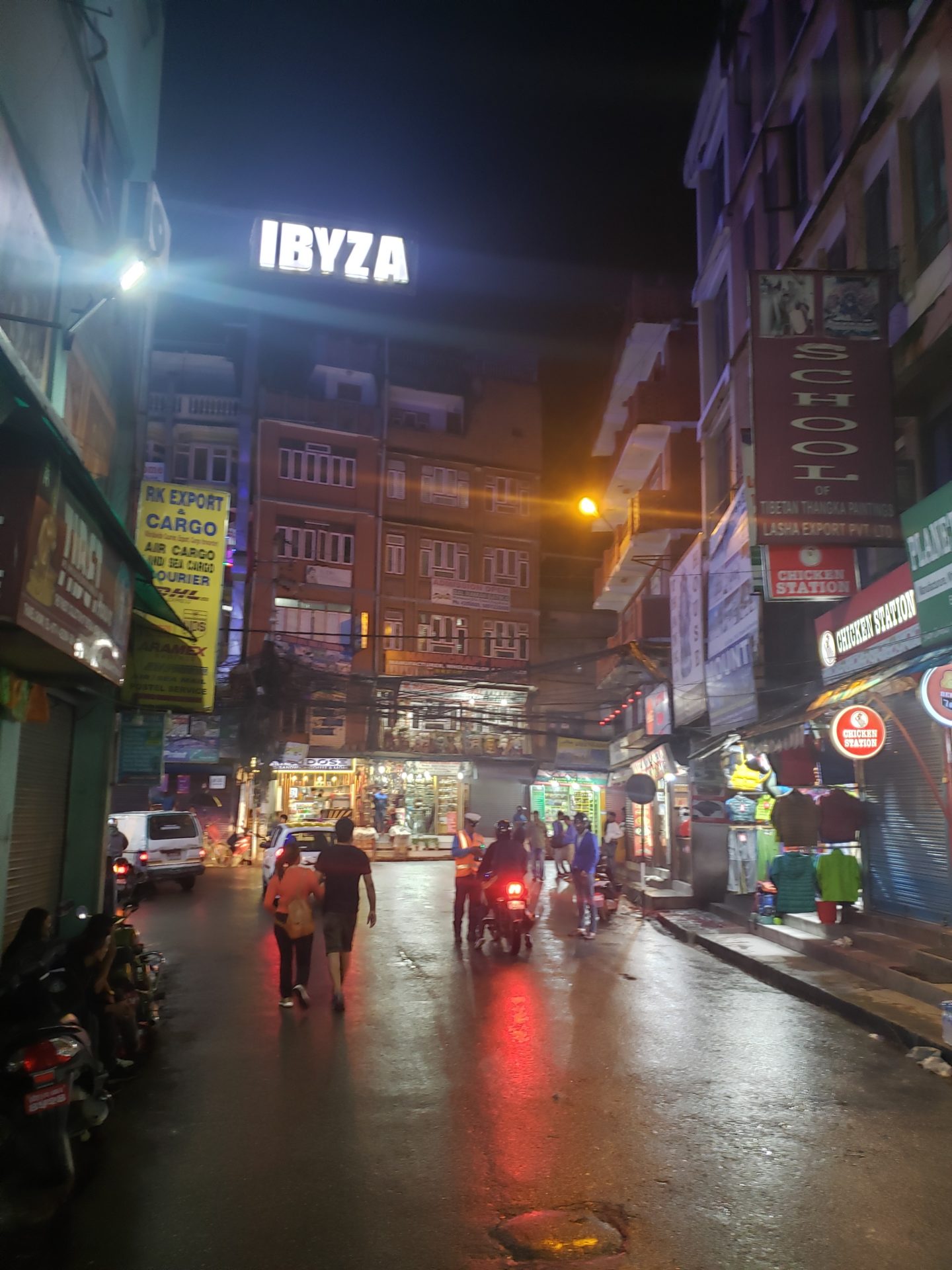




New Orleans Bar
I went to New Orleans Bar because I am a tourist and was nostalgic at how the bar looked so much like Pat O’Briens. The hurricanes were not the same (see Guns & Butter: New Orleans Travel Guide (Binge Edition).


TPOL’S TIP: Pay attention to how much drinks cost. Alcohol is expensive compared to food in Nepal. I was expecting to pay $1 a beer. Big bottles of beers are 350-600 ($3 to $5) each, even local ones.
Hyatt
I was supposed to stay at the Hyatt for one night. I ended up staying three. The second was after my flight to Pokhora was canceled. The third was when I hired a driver to take me from Chitwan because I didn’t want to risk missing my flight back to Shanghai. Ironically, I was stuck in an 8-hour traffic jam. Hyatt is worth seeing for one night to escape the madness of Kathmandu. It is not a good base if, for some reason after reading this review, you feel it necessary to stay in Kathmandu longer.

Monkey Temple
What’s a Kathmandu Travel Guide without monkeys? Thus far Kathmandu was a chaotic mess. It was rainy. It was noisy. It was not fun. Then I went to Monkey Temple (Swayambhu). That was great. The monkeys are nuts. If you see only one thing in Kathmandu, see Monkey Temple.










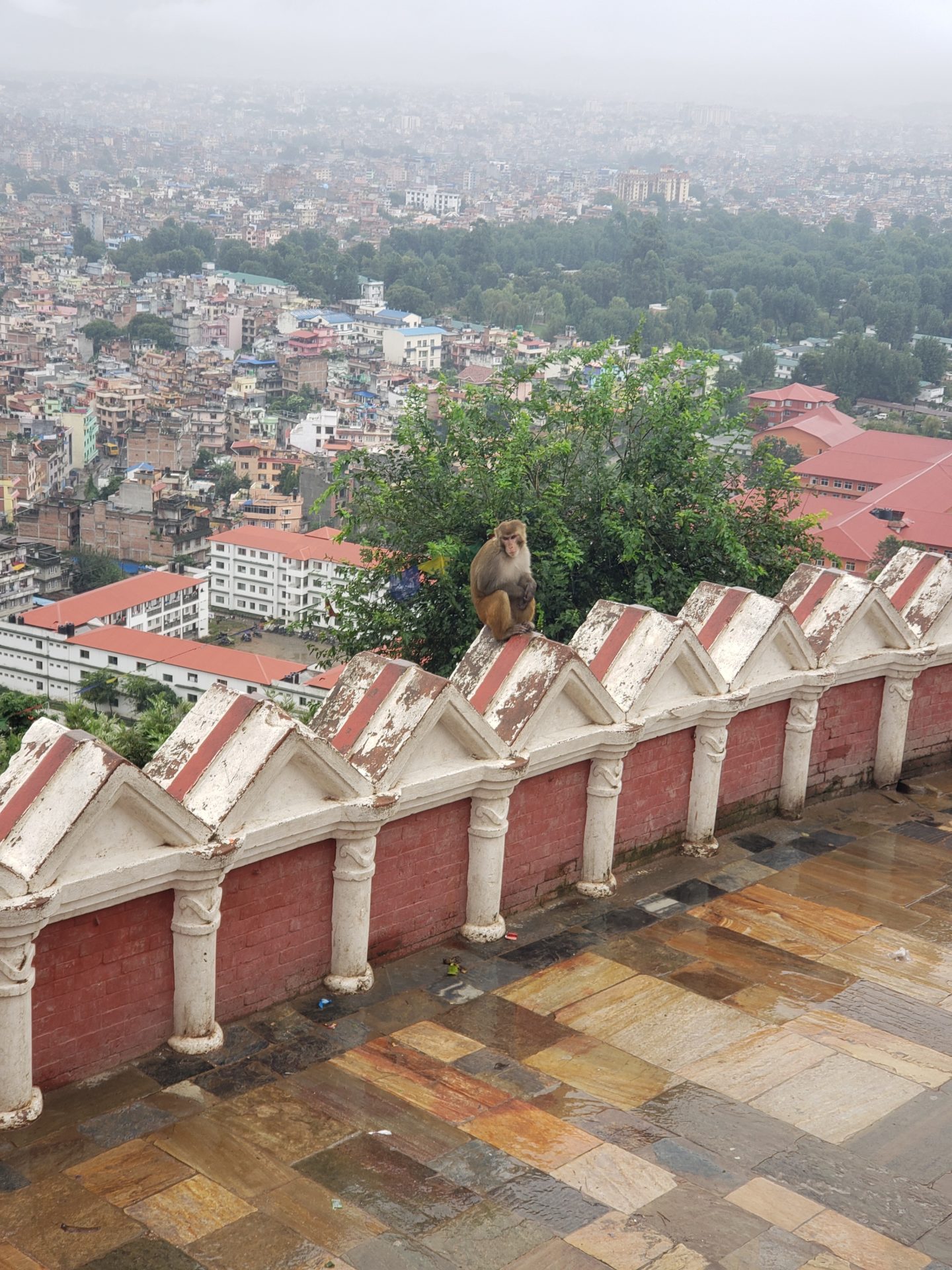

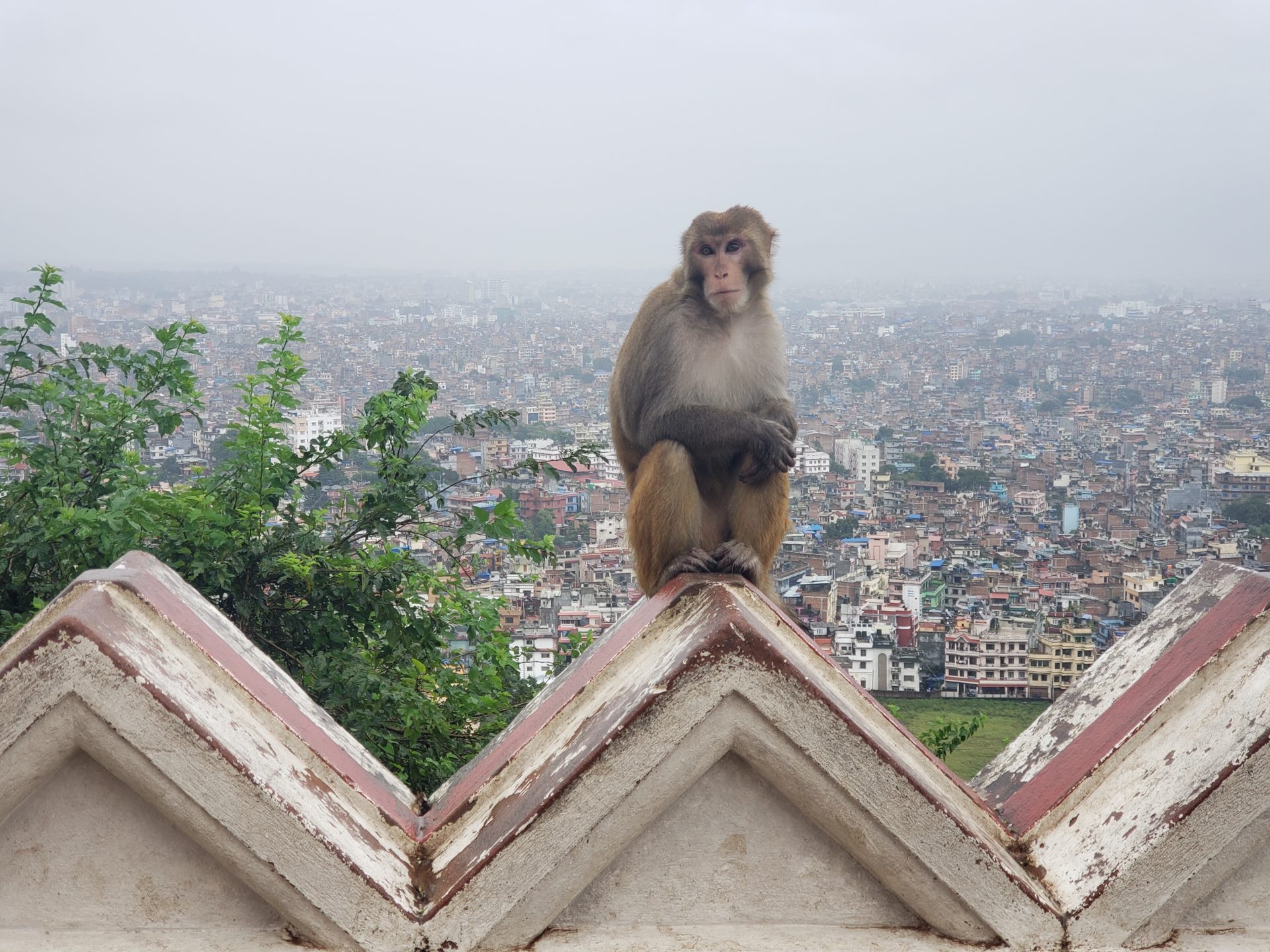












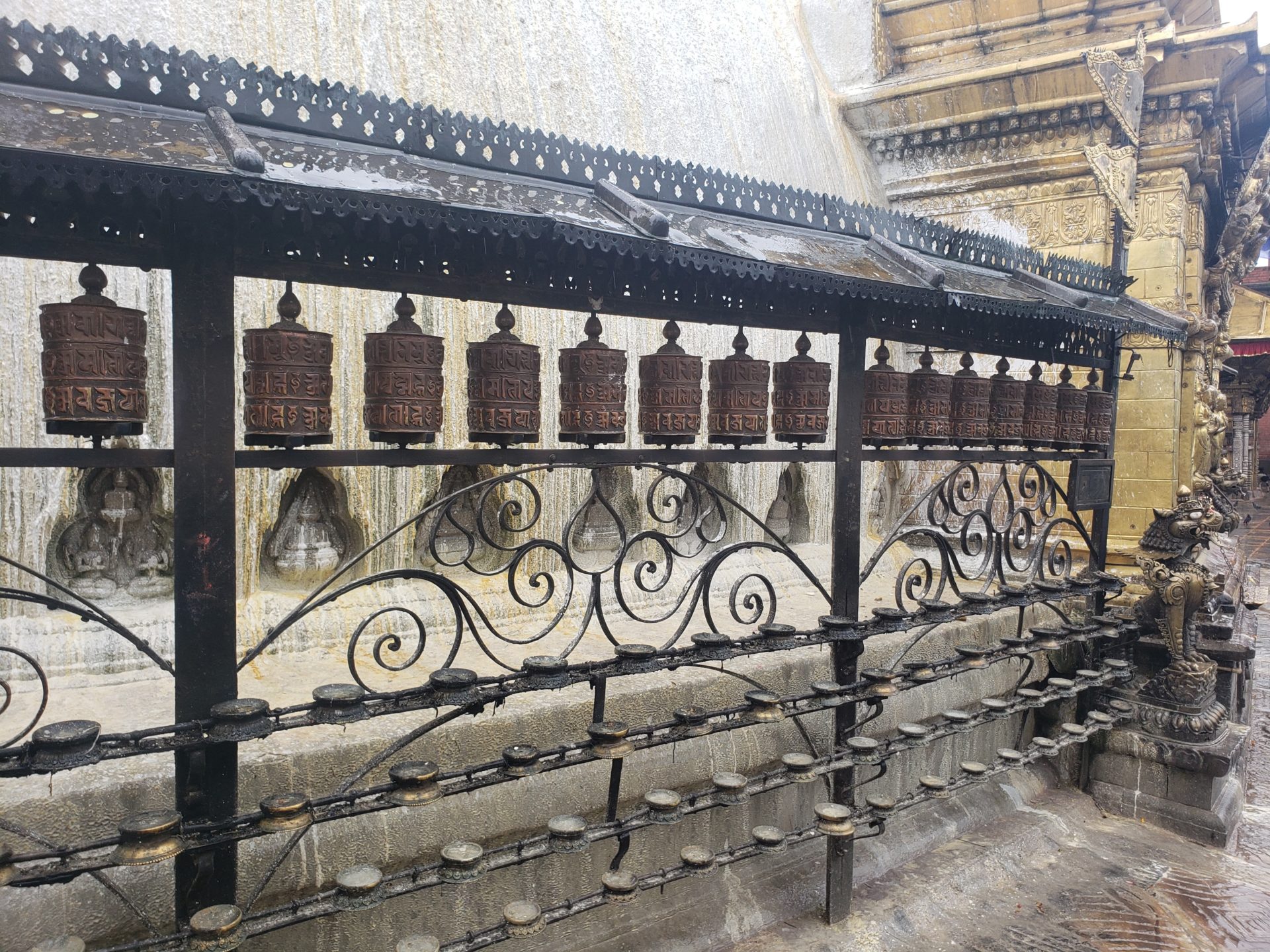
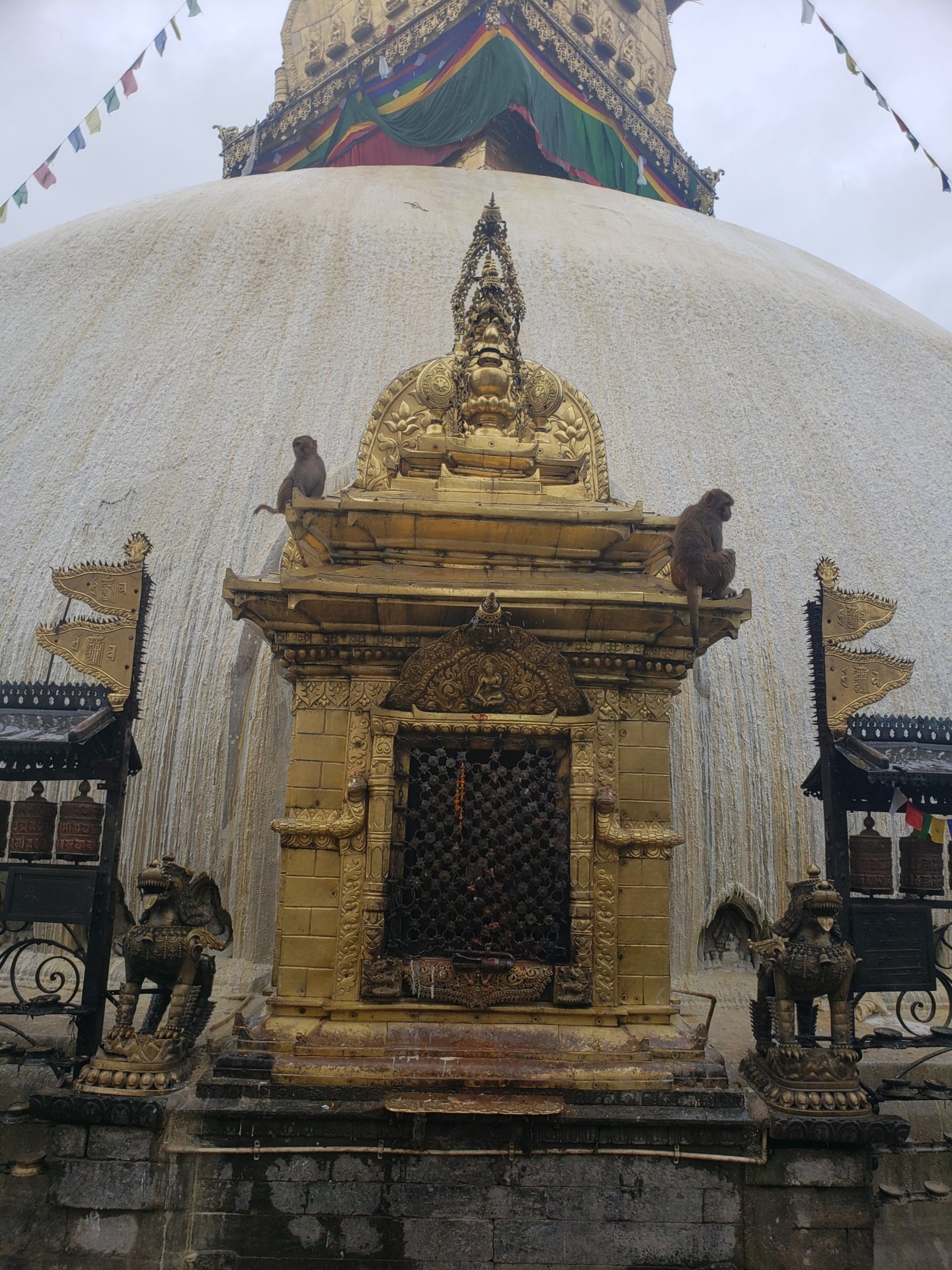







TPOL’s TIP: The cost was 700 rupees on the way there and then 500 on the way back.
Overall
TPOL is one and done with Kathmandu. I got more than I bargained for.
Kathmandu Travel Guide is part of the ANA, Take Me ‘Round the World Trip Report.


I like the Trump pictures. What’s with the cigarette? Please tell me you don’t smoke those cancer sticks.
Lol they were just on the table. No smoking for me.